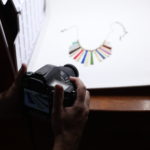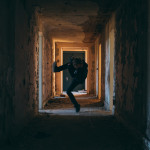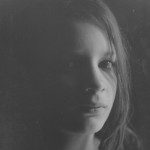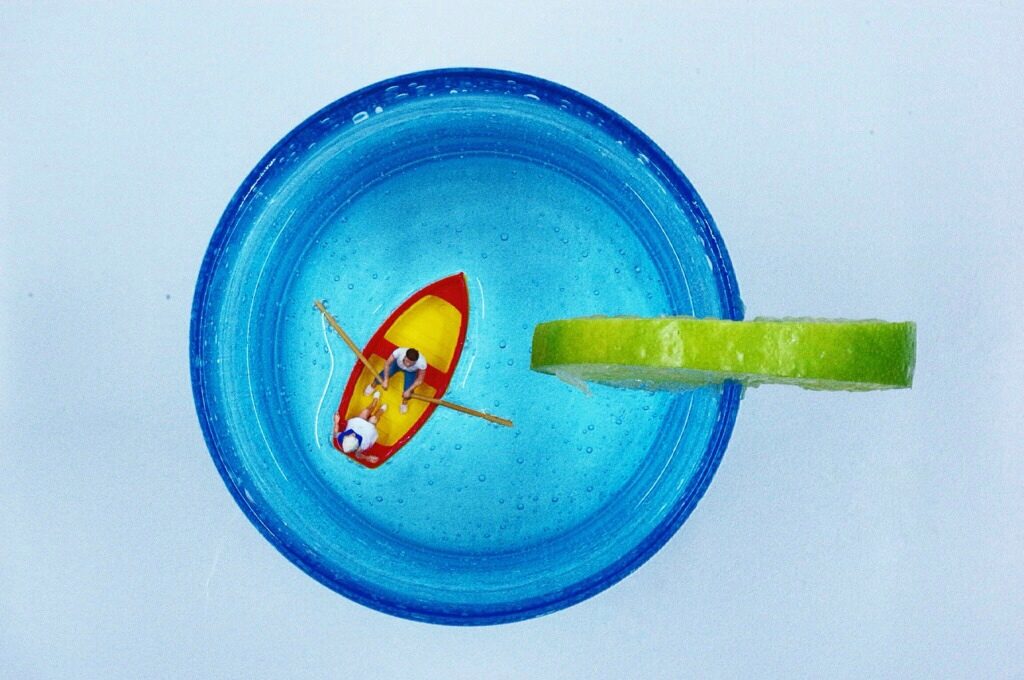When it comes to light boxes for photography, there’s no shortage of options. They come in a wide range of prices, sizes, and materials. You can spend anywhere from thousands to tens of dollars. I hadn’t had much experience with trying one out, so when the folks at SHOTBOX offered to send me one to play with, I was happy to give it a shot (pun intended).
Given my aforementioned inexperience with using light boxes, I asked my friend Dave to come help me test it out, as he regularly uses them. Dave has a rather unique use for light boxes- he shoots miniatures, often pairing them with food items. Having used a few different light box setups, and having heard of this one, he was happy to help me put it to the test. He brought over some of his gear and we had some fun trying it out.
The first draw for us was the portability factor: the entire kit folds up and fits into a flat tote, which can easily slide into the corner of your car trunk. Part of the reason for this is that there are LED lights built right into the frame; there’s no additional lighting required, unless you use the SideShot, which is a small arm with additional lighting that can be aimed at the front opening of the box.
The LED lighting in particular was another attractive feature: the box has a switch on the front which allows you to toggle between the left or right light strip, or, have them both on simultaneously. Better yet, there is a dimming switch which allows you to experiment with different levels of brightness. If glare or other lighting issues are a problem, there is a Shield Kit included, and the website has a FAQ section which includes tips and a video on ways to reduce glare.
While the design of the box is geared towards mobile photographers, we found that, for the most part, it also works just fine with a DSLR camera. The box has a set of openings at the top which allow for aerial views, which most ‘big’ cameras can shoot through also. If you’re using the SideShot, you’re going to need to use a mobile phone to get a straight on picture. It’s designed so a phone can lay on it (upside down) and shoot through the opening.
While we didn’t try inserting our own backdrops, the set of four that came with the Deluxe Bundle worked nicely. They come in green, blue, black and white; we stuck with the white as it suited our purposes. The backdrop kit is made specifically to work with the base kit, with a small rod which hangs nicely on the back of the interior. For those looking for an easy way to provide a wider range of background colors, some colored poster board will do the trick.
One thing to keep in mind is the size of the box: depending on what you’re planning to shoot, the area inside might be a little tight. Of course with Dave’s miniature figurines, this wasn’t an issue. The inside measures 14 1/4″ wide, 15″ deep, and 15″ tall, and then, depending on what you’re shooting with, you’ll need to figure out what type of crop will work best for your photo.
A top professional light box model can cost upwards of $10,000, whereas the cheapest kits can be found for around $20 on eBay and other similar sites. The SHOTBOX base unit falls on the lower end of this spectrum, at $149 (currently on sale for $129), while the Deluxe Bundle — which includes a tote, a backdrop set, and the SideShot — rings in at $219 (currently on sale for $199). If you’re someone who is looking for a solid light box, with mobility and ease of use as top factors, then SHOTBOX is for you.
Finished shots by Dave:
About Author
- Jeff can usually be found roaming the streets of Northampton, Massachusetts, pretending to deliver mail. Between deliveries he takes pictures with his iPhone, always in search of new ways of interpreting the world around him. His editing style ranges from minimal to outrageous, and constant experimentation, collaboration, and inspiration from other mobile photographers keeps Jeff motivated to try new things.
Latest stories
 Jeff KelleyAugust 22, 2016SHOTBOX Photo Studio: a review
Jeff KelleyAugust 22, 2016SHOTBOX Photo Studio: a review Jeff KelleyJuly 30, 2016Polaroid Swing: Not Just Another App
Jeff KelleyJuly 30, 2016Polaroid Swing: Not Just Another App Jeff KelleyJanuary 22, 2016Dancing in Abandoned Places with Austen Browne
Jeff KelleyJanuary 22, 2016Dancing in Abandoned Places with Austen Browne Jeff KelleyOctober 28, 2015A Phone-y Film Experiment
Jeff KelleyOctober 28, 2015A Phone-y Film Experiment


![IMG_4103[1]](https://grryo.com/wp-content/uploads/2016/08/IMG_41031.jpg)
![IMG_4121[1]](https://grryo.com/wp-content/uploads/2016/08/IMG_41211.jpg)
![IMG_4106[1]](https://grryo.com/wp-content/uploads/2016/08/IMG_41061.jpg)
![IMG_4143[1]](https://grryo.com/wp-content/uploads/2016/08/IMG_41431.jpg)
![IMG_4119[1]](https://grryo.com/wp-content/uploads/2016/08/IMG_41191.jpg)
![IMG_4105[1]](https://grryo.com/wp-content/uploads/2016/08/IMG_41051.jpg)
![IMG_4134[1]](https://grryo.com/wp-content/uploads/2016/08/IMG_41341.jpg)

